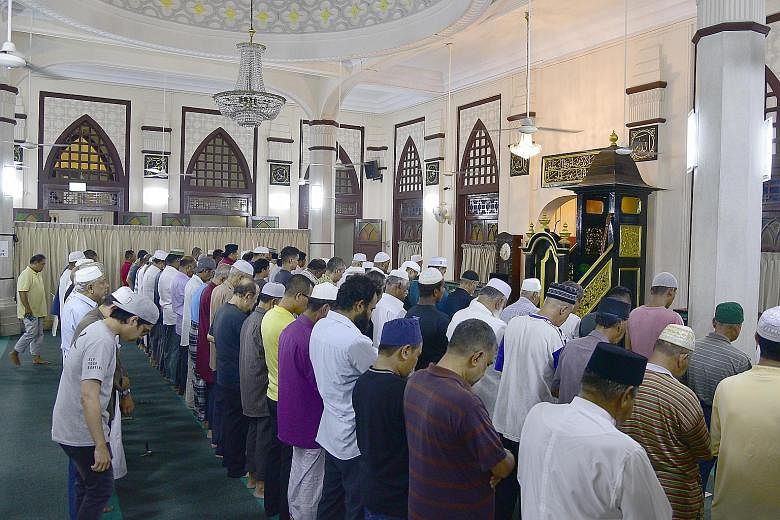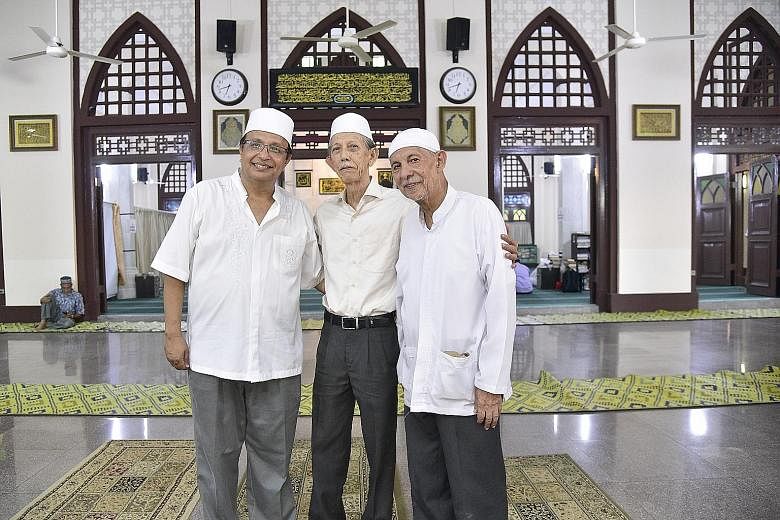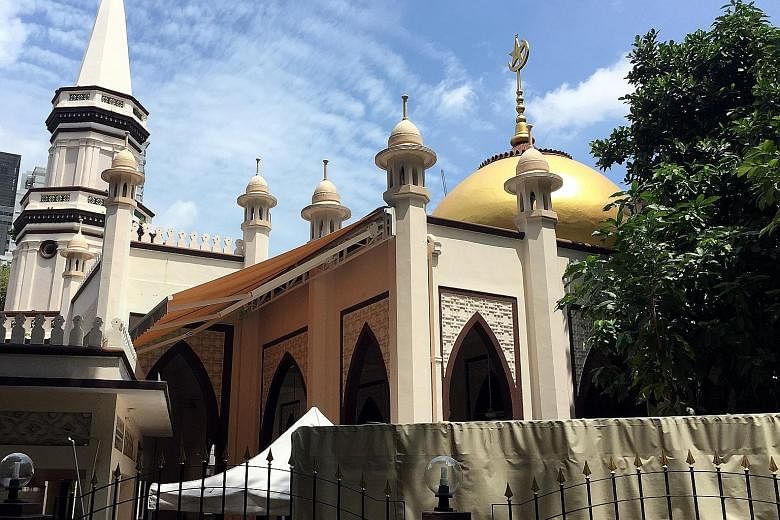In Singapore, relatively few roads and places are named after women and the same goes for mosques.
Hajjah Fatimah Mosque in Beach Road stands out for being one of the few named after a woman.
There are only three such mosques here, according to the Islamic Religious Council of Singapore (Muis). The others are Khadijah Mosque in Geylang and Hajjah Rahimabi Mosque in Kim Keat, both built in the last century.
The Beach Road mosque, built between 1842 and 1846, is the oldest of the three.
The woman who built this place of worship was Malaccan Hajjah Fatimah Sulaiman, who came to Singapore with sailing ships and a sizeable inheritance in the early 1800s. "Hajjah" is an honorific given to women who have completed their pilgrimage to Mecca.
She had a most unusual life, moving to Singapore after her first marriage failed, and marrying her second husband, a Bugis prince and merchant from the Celebes, after arriving here.
But her second marriage ended abruptly too as her husband died shortly after.
After his death, the widow used her ships to grow his trading business and amassed a great fortune.
Using that money, she built a home for herself where the Hajjah Fatimah Mosque now stands.
Her home was ransacked by burglars twice in the 1830s and was burned down on the second occasion. Fortunately for Hajjah Fatimah, she was unhurt as she was away then.
-
1842- 1846
Hajjah Fatimah Mosque was built.
-
1930s
French contractors Bossard & Mopin and Malay artisans rebuilt the main prayer hall based on designs by Chinese architects Chung & Wong.
-
1970s
Renovation that supposedly corrected the minaret's tilt was done but the minaret still appears to be leaning slightly, thus earning its nickname, the "Leaning Tower of Singapore".
-
1973
The mosque is gazetted as a national monument on June 28.
-
2017
From April to the end of the year, the mosque is undergoing a $500,000 restoration co-funded under the National Monuments Fund, administered by the Preservation of Sites and Monuments division.
Attributing her lucky escape to God's grace, Hajjah Fatimah donated money and the land that her house stood on towards the building of a mosque.
The mosque, which was gazetted as a national monument on June 28, 1973, may be named after its benefactor, but was better known as Java Road Mosque after a nearby road that has since been expunged.
One of its features is what some call "Singapore's leaning tower" - a four-level minaret which tilts at an angle of about six degrees due to moisture seepage and the shifting of the tower's handmade bricks.
While the minaret's tilt cannot be rectified, steps have been taken to monitor the slant.
The mosque is undergoing restoration work which started in April and is set to be completed by the end of the year.
Mr Syed Mohdar Alsagoff, a fifth-generation descendant of Hajjah Fatimah, has been involved with the mosque for almost 40 years and still frequents it despite living in Siglap.
The 75-year-old said he goes to the mosque every day during Ramadan as well as for Friday prayers.
To him, it is more than just a place of worship. "The mosque is a part of our legacy," he said.
Hajjah Fatimah, believed to have died at age 90 in 1865 according to her descendants, is buried in a private enclosure behind the mosque, with a smaller grave believed to be that of a child of one of her servants.
Hajjah Fatimah and her second husband had a daughter named Raja Siti, who married Mr Syed Ahmed Abdulrahman Alsagoff.
Next to Hajjah Fatimah's grave is a separate enclosure where her son-in-law, grandson and brother-in-law are buried.
According to Mr Mohdar, her daughter Raja Siti died in Mecca and was buried there, not in the mosque as most sources claim.
Mr Mohdar was chairman of the Hajjah Fatimah Mosque management board for 10 years before stepping down in April. His nephew, Ustaz Syed Mustafa Alsagoff, 42, is the current chairman.
The Alsagoffs were the keepers of the mosque until Muis started to manage mosques here in 1968.
But the Alsagoff family remains active when it comes to matters concerning the mosque as Raja Siti's son Syed Mohamed Ahmed Alsagoff left behind a trust to maintain the mosque, as well as to build the Alsagoff Arab School, which was founded in 1912 and still stands across the street from the mosque.
Part of the trust also goes to orphanages run by the Muslimin Trust Fund Association.
The mosque's close links to the family can be seen by the more than 30 graves surrounding it, all bearing the Alsagoff name.
Mr Mohdar said when he was a child, his father took him to look at the graves and he would imagine the lives his forefathers lived.
As an adult, he began to appreciate what has been left behind.
He said: "I am so inspired by what my forefathers have done. They have left behind these tangible things for our future generations to be able to come back to, no matter where they are or what their standing in life is.
"They can come back here and see this mosque with Hajjah Fatimah's name and the madrasah with the Alsagoff name, and know the legacy that is their heritage."
Mr Mohdar said they still do weekly prayers meant to pay respects to the dead called "tah lil" for Hajjah Fatimah and her grandson.
"Whenever we do major prayers, like during festivals, we still mention Hajjah Fatimah. I mean, she's the reason why this mosque exists," he said.



